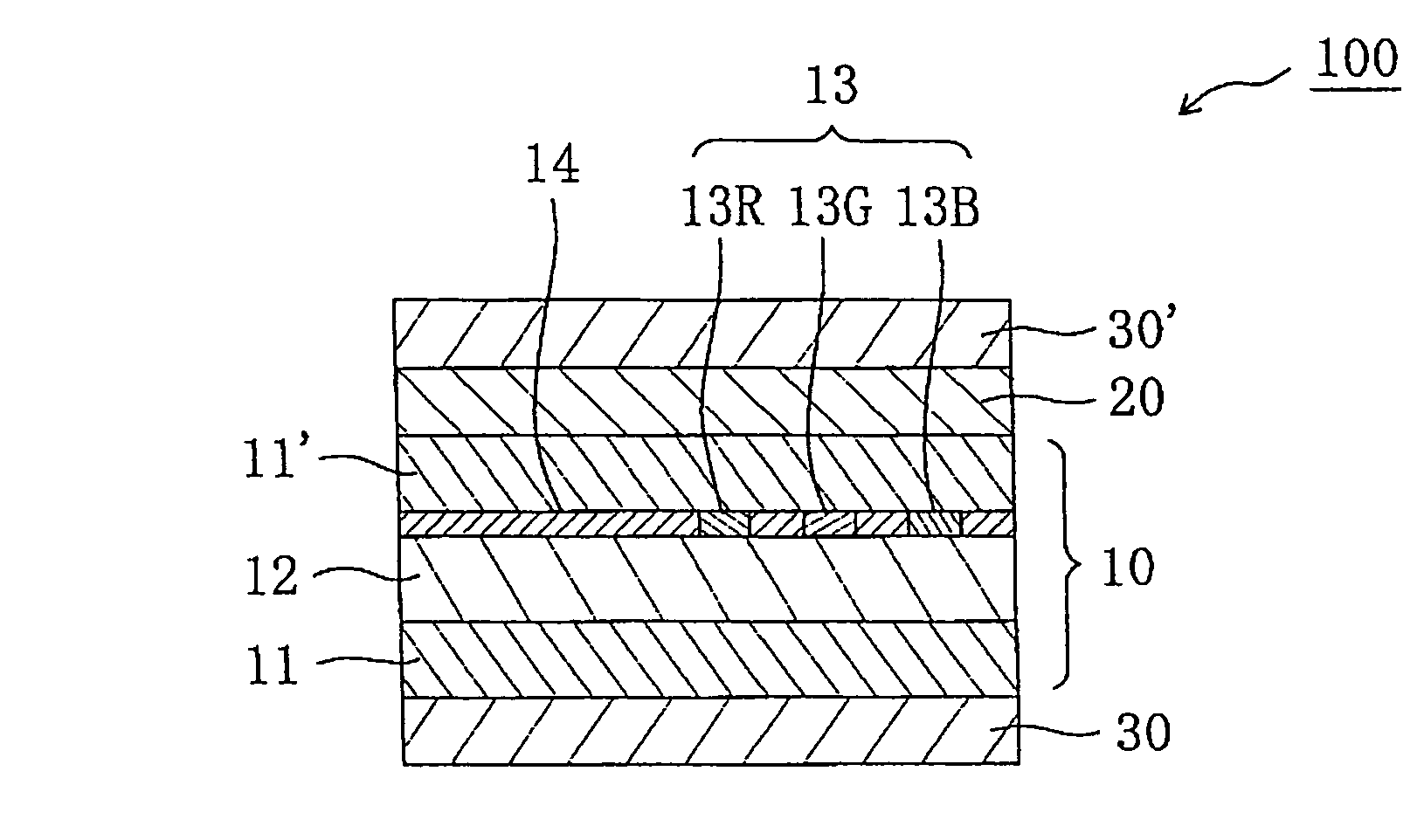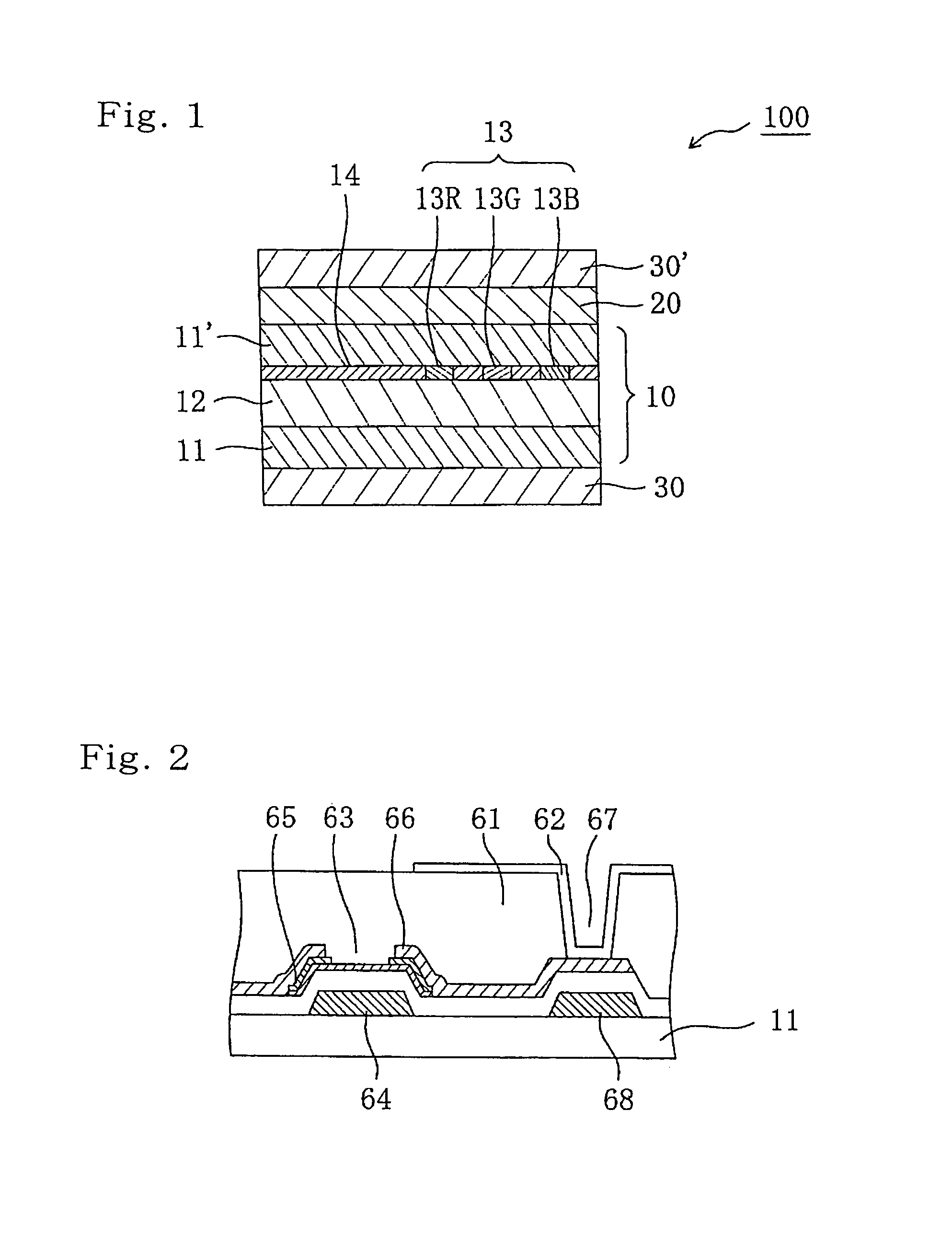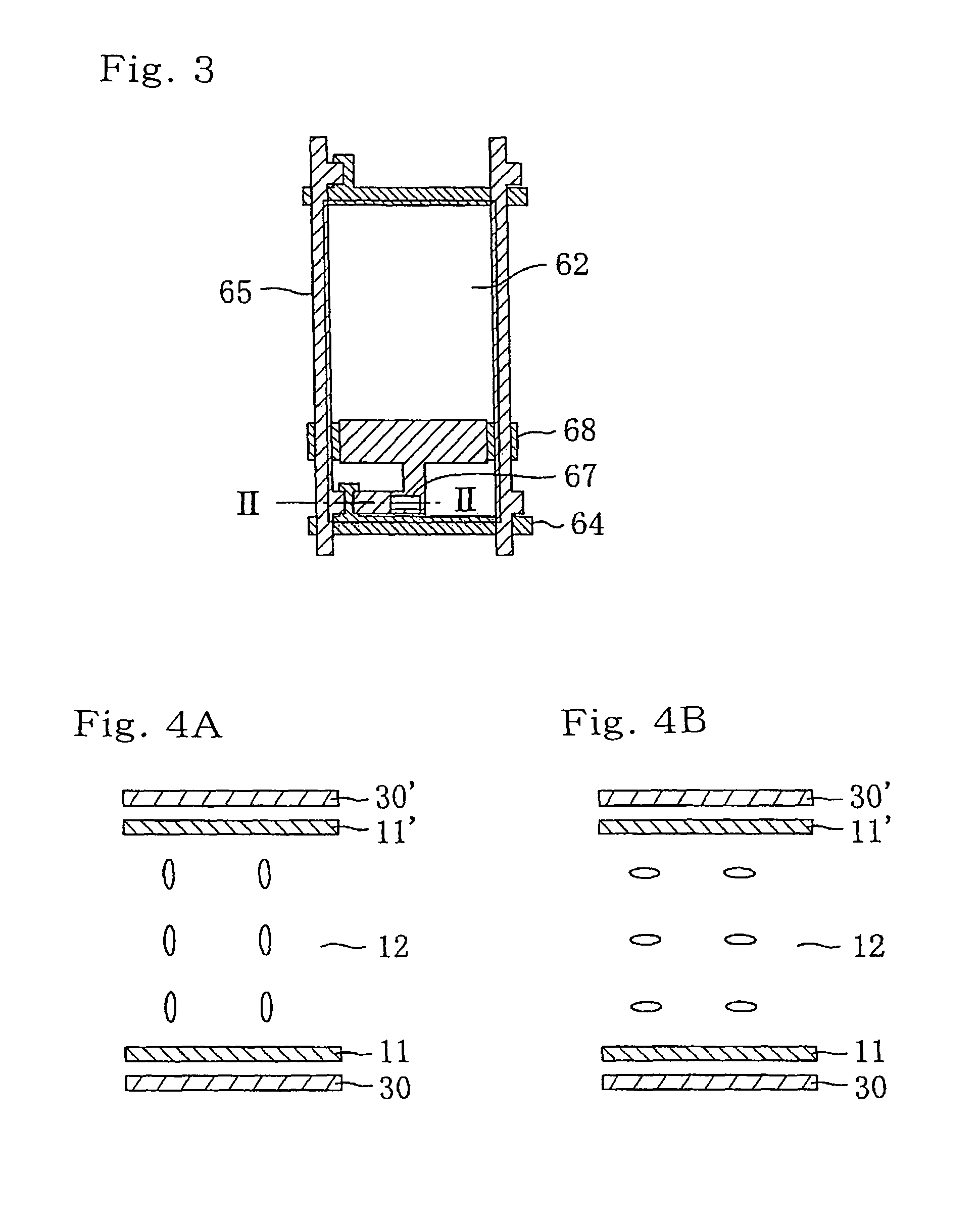Liquid crystal display apparatus
a technology of liquid crystal display and display screen, which is applied in the direction of optics, polarising elements, instruments, etc., can solve the problems of critical issues such as the degradation the deformation of contrast in the oblique direction, so as to achieve excellent viewing angle compensation, exceptional contrast, and reduce thickness
- Summary
- Abstract
- Description
- Claims
- Application Information
AI Technical Summary
Benefits of technology
Problems solved by technology
Method used
Image
Examples
preparation example 1
Formation of Optical Compensation Layer
[0127]Polyimide represented by the following formula (6), synthesized from 2,2-bis(3,4-dicarboxyphenyl)hexafluoropropane dianhydride (6FDA) and 2,2′-bis(trifluoromethyl)-4,4-diaminobiphenyl (TFMB), and having a weight average molecular weight (Mw) of 70,000 was dissolved in methyl isobutyl ketone, to thereby prepare a 15 wt % polyimide solution. Preparation of polyimide or the like was carried out by referring to a method described in a document (F. Li et al., Polymer 40 (1999) 4571-4583). Meanwhile, a triacetylcellulose (TAC) film having a thickness of 80 μm was stretched in a width direction 1.3 times at 175° C. through fixed end stretching, to thereby produce a stretched TAC film having a thickness of 75 μm as a substrate film. The polyimide solution was applied onto the substrate film to be dried at 100° C. for 10 minutes. As a result, an optical film A having an optical compensation layer on the substrate film was obtained. The optical com...
preparation example 2
Production of Optical Compensation Element
[0129]A polyvinyl alcohol film was colored in an aqueous solution containing iodine and then uniaxially stretched 6 times between rolls of different speed ratios in an aqueous solution containing boric acid, to thereby obtain a polarizer. The obtained polarizer was laminated on a surface of the substrate film of the optical film A on which the optical compensation layer is not formed. The polarizer was laminated such that a slow axis of the optical compensation layer and an absorption axis of the polarizer were substantially perpendicular to each other. Then, a commercially available TAC film (trade name “UZ-TAC”, available from Fuji Photo Film Co., Ltd.) having a thickness of 40 μm as a protective layer was laminated on a surface of the polarizer on which the optical film A is not laminated, to thereby obtain an optical compensation element B.
example 1
[0130]A liquid crystal cell was removed from a 32-inch liquid crystal monitor LTA260W2-L06 (installed with Patterned-VA liquid crystal cell, manufactured by SAMSUNG). The above optical compensation element B was attached to a viewer side of the liquid crystal cell (that is, the same side as the color filter with respect to the liquid crystal layer) through an acrylic adhesive (thickness of 20 μm) such that the polarizer (actually, TAC protective layer thereof) was arranged on the outer side (viewer side). A polarizing plate (trade name “HEG1425DU”, available from Nitto Denko Corporation) having a structure of TAC protective layer / polarizer / TAC protective layer was attached to a backlight side of the liquid crystal cell through an acrylic adhesive (thickness of 20 μm). A haze value of the substrate provided with the color filter used for the liquid crystal panel was 2.8%. A liquid crystal display apparatus was produced using the liquid crystal panel, and contrast in a frontal directi...
PUM
| Property | Measurement | Unit |
|---|---|---|
| haze | aaaaa | aaaaa |
| thickness retardation Rth | aaaaa | aaaaa |
| thickness retardation Rth | aaaaa | aaaaa |
Abstract
Description
Claims
Application Information
 Login to View More
Login to View More - R&D
- Intellectual Property
- Life Sciences
- Materials
- Tech Scout
- Unparalleled Data Quality
- Higher Quality Content
- 60% Fewer Hallucinations
Browse by: Latest US Patents, China's latest patents, Technical Efficacy Thesaurus, Application Domain, Technology Topic, Popular Technical Reports.
© 2025 PatSnap. All rights reserved.Legal|Privacy policy|Modern Slavery Act Transparency Statement|Sitemap|About US| Contact US: help@patsnap.com



